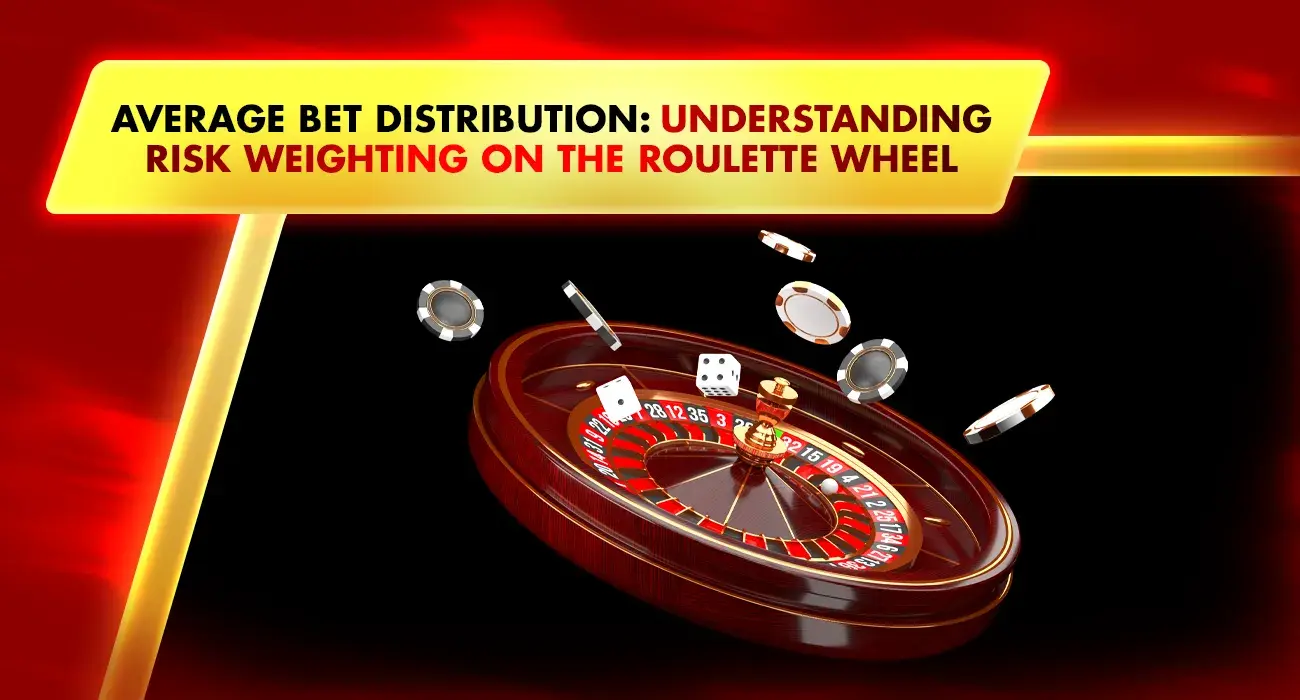In the world of roulette, most players focus on obvious metrics: hot numbers, cold numbers, hit frequency, wheel trends, or dealer rhythm. But seasoned players—and increasingly, smart players on Khelraja online casino—track something far more revealing: average bet distribution.
This hidden metric tells you where your money actually goes and how much risk you’re secretly taking on each spin. Beginners usually ignore it. Professionals obsess over it. And anyone who wants to treat roulette like a structured strategy game rather than pure luck must understand it.
In this guide, we’ll break down what average bet distribution is, why it matters more than single-spin outcomes, and how your risk weighting changes when your bets cluster in the wrong places. You’ll also learn how to track your distribution on every session—whether you play on a browser, a laptop, or a live casino app.
What Is “Average Bet Distribution”?
Your average bet distribution is simply the way your bankroll is spread across your chosen roulette bets over time. It measures the proportion of your total wagers that go into:
- Inside bets
- Outside bets
- High-risk stacks
- Low-volatility safety nets
- Wheel sectors
- Single-number hunting
- Even-chance stability zones
But more importantly, it tells you how your risk weighting shifts—not just from one spin to the next, but across the entire session.
Most players think they bet evenly. In reality, their money often clusters in unbalanced zones, creating hidden volatility spikes.
Before we break down good and bad distributions, it helps to understand how this metric exposes player behavior.
Why Your Distribution Matters More Than Win Rate
If you bet ₹1,000 per spin but 70% of that total sits on volatile inside bets, your session volatility skyrockets. On the other hand, if you maintain a 60/40 or 70/30 weighting toward outside bets, your bankroll curve becomes smoother—even if your win rate doesn’t change.
Bet distribution influences:
- Your session stability
- Your break-even threshold
- Your risk exposure
- The emotional swings that trigger tilt
- How long your bankroll lasts in a real money earning games session
- Whether you can bounce back from downturns
This is why pro roulette players track distribution just as carefully as sports bettors track unit size.
The Signs You’re Using a Problematic Bet Distribution
Roulette beginners often fall into unbalanced patterns without realizing it. And these patterns create predictable problems—burning bankrolls, sudden volatility spikes, and emotionally driven play.
Before we list the red flags, here’s a clearer explanation:
Bad distribution doesn’t happen in a single spin—it accumulates silently across dozens of rounds. It happens when emotional betting replaces structured betting, or when a player overweights certain numbers or sectors due to hunches. This creates a fragile risk profile that collapses as soon as variance swings against them.
Common Signs of Bad Bet Distribution
Now, with that context, here are the specific red flags:
- You place too many inside bets relative to bankroll size.
- Your bets cluster heavily on a few numbers or small sectors.
- You chase losses with bigger, higher-volatility wagers.
- You increase bet count rather than adjusting strategy.
- You rely on “gut feeling” spins with no pattern tracking.
- Most of your money goes into bets with <10% hit probability.
- You have no fixed ratio for inside vs. outside bets.
If three or more of these sound familiar, your distribution is likely working against you, not for you.
What Good Bet Distribution Looks Like
A smart roulette player spreads risk strategically—not randomly. Before listing the good patterns, here’s the main principle:
A good distribution is one that gives you multiple ways to survive variance, keeps bankroll swings moderate, and creates consistent session longevity. The goal isn’t to predict the wheel perfectly; it’s to ensure your risk exposure matches your bankroll size and play style.
Signs of Healthy Bet Distribution
A good average bet distribution typically includes:
- A balanced mix of low-volatility and medium-volatility bets.
- Clear allocation rules (e.g., 60% outside bets, 40% inside bets).
- Limited clustering—bets spread across different number zones.
- Sector bets used intentionally, not emotionally.
- A consistent average stake per spin.
- A ceiling on the number of bets placed per round.
- Tracking tools or logs to maintain discipline.
This balance allows you to capitalize on high-reward opportunities without exposing your entire bankroll to unnecessary risk spikes.
Three Distribution Strategies Used by Smart Roulette Players
Before jumping into the strategies, here’s why they matter:
Most players think roulette strategy comes from predicting spins, but real consistency comes from controlling how your money enters the table. These bet distribution templates help players avoid emotional betting, tilt-based chasing, and hidden volatility traps.
Below are the three most common and effective approaches.
1. The 70/30 Stability Model
Recommended for players who want long sessions with low volatility.
How it works:
- 70% of your total wagers go into outside bets.
- 30% goes into strategic inside bets (splits, lines, or sectors).
This model keeps losses manageable while giving you occasional high-reward shots.
2. The Sector Hedge Approach
Ideal for players who track dealer consistency or wheel tendencies.
How it works:
- Choose one wheel sector (8–12 numbers).
- Use 30–60% of your bet spread there.
- Leave the rest for outside bets or side coverage.
This reduces clustering risk while keeping targeted value alive.
3. The Flat-Distribution System
Perfect for beginners or players using a live casino app.
How it works:
- All chosen bets receive equal stake value.
- No progressive betting.
- No chasing losses.
This removes emotional decision-making and stabilizes your average loss/gain rate.
How Tilt Destroys Bet Distribution
Even with a strong distribution strategy, tilt—emotional decision-making during losing streaks—can ruin everything.
Tilt doesn’t look like rage or panic. It often appears subtle: betting a little faster, adding “just one more” inside bet, doubling coverage without planning. But every tilt-driven adjustment shifts your average bet distribution toward higher risk, leading to faster bankroll collapse.
Tilt Behaviors That Break Distribution
- Adding extra inside bets after losses
- Increasing stake size without ratio rules
- Betting opposite outcomes impulsively
- Spreading bets too thin across the wheel
- Jumping tables to “escape bad luck”
Knowing these signs helps you identify emotional play and restore discipline before your risk weighting spirals out of control.
Why Average Bet Distribution Matters More Than Hot or Cold Numbers
Here’s the truth most roulette players overlook:
Hot numbers don’t protect your bankroll. Cold streak analysis won’t stop volatility. Trend tracking can help—but only if your distribution supports long-term play.
Bet distribution is the foundation that keeps you in control, regardless of wheel randomness. If you can manage this single metric, you can stabilize your sessions, beat emotional swings, and make smarter decisions whether you’re playing on desktop or the Khelraja online casino mobile app.
Why Bet Distribution Is the Most Important Roulette Metric
Because distribution reveals the real health of your session.
Tracking wins tells you what already happened.
Tracking distribution tells you what will happen if you keep playing this way.
A player who tracks distribution can identify:
- early signs of a bad table
- when volatility is too high
- when bet density is draining the bankroll
- when risk is not balanced
- when to exit the table
This is why distribution analysis is one of the most powerful tools for players who take roulette seriously.
7 Reasons Bet Distribution Determines Your Roulette Success
- It controls how much volatility your bankroll absorbs.
- It prevents emotional clustering or tilt-based betting.
- It keeps your session length predictable and stable.
- It balances high- and low-risk bets for smoother results.
- It helps you avoid overexposure to low-probability outcomes.
- It turns your roulette gameplay into a measurable system.
- It improves long-term survival regardless of wheel randomness.
Master your average bet distribution, and roulette becomes less chaotic, more strategic, and far more rewarding.
Final Verdict: Bet Distribution Is Your Hidden Edge in Roulette
Roulette is a game of randomness, but your behavior isn’t random.
Your bet distribution shapes everything:
- your survival
- your risk
- your emotional stability
- your bankroll lifespan
- your session results
When you’re playing at a Khelraja online casino table, understanding how your bets spread across the wheel is the difference between chaotic gambling and controlled strategy.
Mastering bet distribution won’t predict outcomes—but it will help you play longer, smarter, and more profitably.






